Your Competitors Know the Importance of Hiring the Right Employees—Do You?
The average cost per new hire has risen to over $4,000, while replacing an employee can now cost you somewhere in the region of $15,000.
You may be thinking, “Hey, I need to work on my employee retention strategy.” But we’re here to tell you that you’re wrong. What you need to work on is your recruitment strategy. Understanding the importance of hiring the right employees is far more valuable than a retention strategy.
More specifically, businesses that want to achieve outstanding value through their new employees need to look to technology to help them profile critical attributes, create job descriptions, source applicants and assess candidates.
Gartner recommends this three-step approach to hiring the right employees (content available to clients):

Using these three steps, we’ll delve into the tech behind each of them that can help you hire the right employees.
Profile Your Critical Attributes
The first step is profiling the right employee. But how can you hire the right employee without knowing what the ideal employee looks like for your organization?
Gartner recommends profiling the critical attributes that you envisage the right employee having. Critical attributes are the core characteristics, qualities and qualifications that the right employee should have for the roles you advertise for.
Even though you’ll already have a general idea, the key to finding the right employees lies in the data and analytics available in tools such as workforce management software.
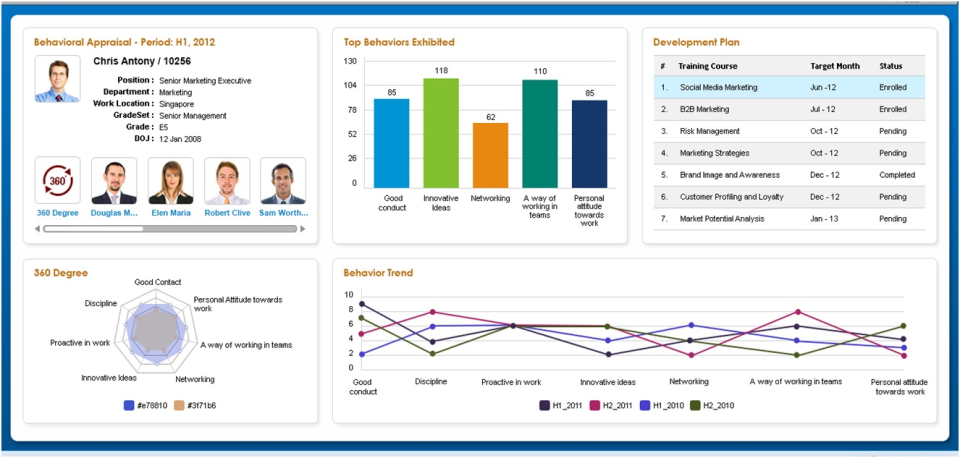

Ramco HCM displays visualizations of employee performance and behavior factors (Source)
Using your top performers’ attributes to define the critical attributes of your new employee persona will lead to hiring success. This will involve aligning the new position alongside similar positions or similar career paths, and noting the attributes that are likely predictors for job success.
For example, if one of your top performers has consistently demonstrated a proactive approach to projects that have resulted in success, then proactive behavior should be one of your critical attributes.
Involving these employees in the recruitment process is also crucial in identifying critical attributes. No one knows what skills and attributes are absolutely necessary for the job better than employees who are currently doing that job or similar.
Start by interviewing your current top performing employees, and ask them what skills they feel are critical for the position you’re hiring for. Next, have them help to look over resumes, suggest relevant skill tests and involve them in appropriate stages of the interview process.
3 steps to profiling critical attributes
Identifying critical attributes early on in the recruitment process will help you clearly define an employee persona to increase your chances of hiring the right employees.
Use your existing employee data to form the basis of your critical attributes which will inform your job description.
Consult with your current employees in similar positions on what they consider mandatory attributes for the position.
Involve your current employees in the interview process to help narrow down candidates who match the critical attributes. Use an applicant tracking system that allows different users to evaluate and score candidates.
Create Quality Job Descriptions and Use Targeted Sourcing
Inadequate job descriptions can be a major cause of hiring mistakes. Inaccurate job information, vague descriptions of responsibilities and generic language will:
Attract the wrong pool of candidates.
Deter top talent from applying in the first place.
Deliver an overinflated pool of applicants that will slow down recruiters and hiring managers due to high volumes of screening.
Importantly, your job descriptions should be focused around the critical attributes that you and your employees have determined. But quality job descriptions will give potential candidates all the information they need and want to know before applying—in other words, they’ll know whether this position is worth investing their time in.
LinkedIn’s recent job description study asked people to highlight the parts of an example job description that were helpful or would encourage them to apply for the position.
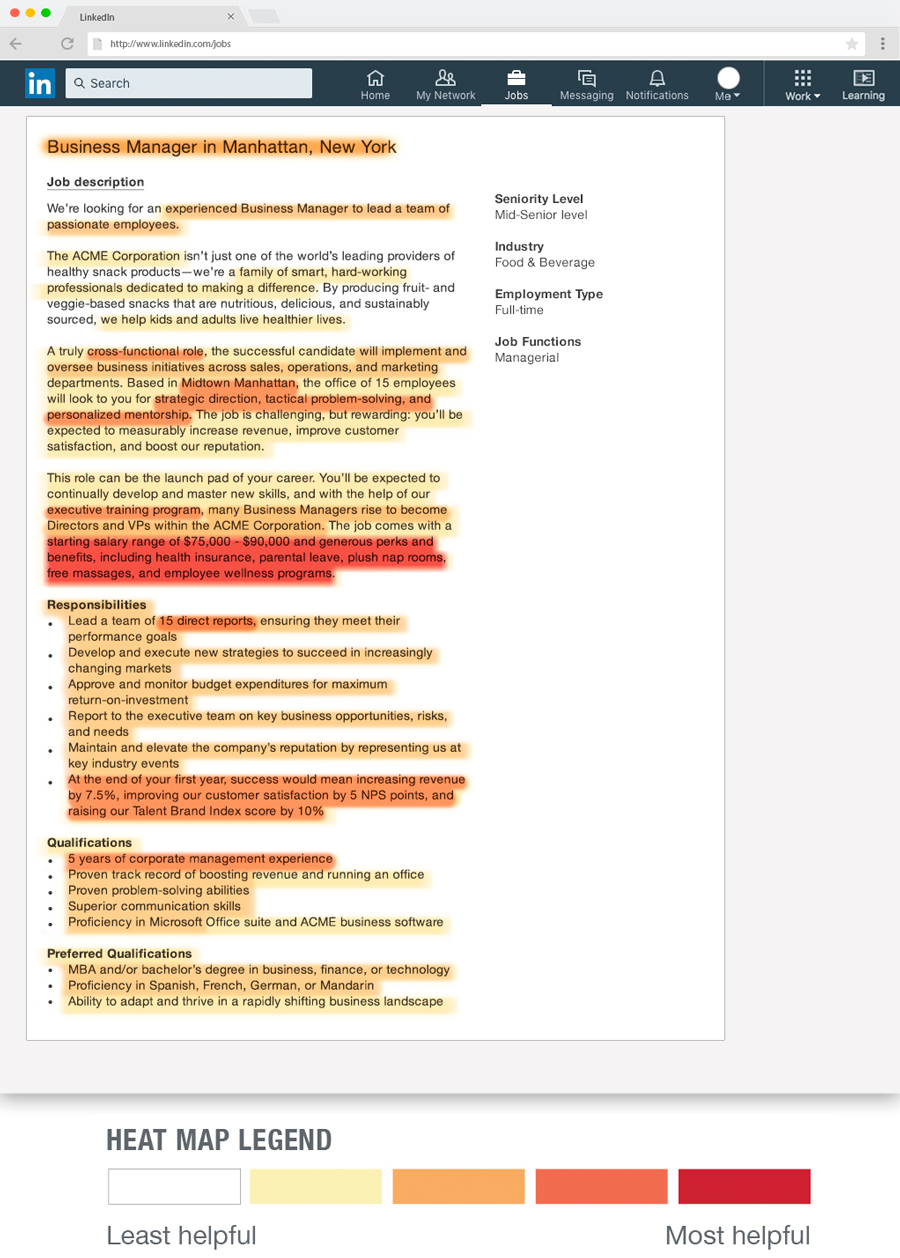
LinkedIn heatmap shows the parts of a job description that candidates are most interested in reading (Source)
Overall, the study revealed that compensation, qualifications and job details were most important to candidates, while company mission, career growth and details about the company mattered least.
Providing specific metrics such as salary, performance goals and team size also helps candidates consider whether they are a good match for the position.
Check out our post on How to Write a Terrible Job Posting in 5 Easy Steps.
Additionally, where you’re focusing your sourcing efforts will affect your chances of hiring the right employee. Applicant tracking systems hold a wealth of information, such as which sources are the best to target based on your previous hires.
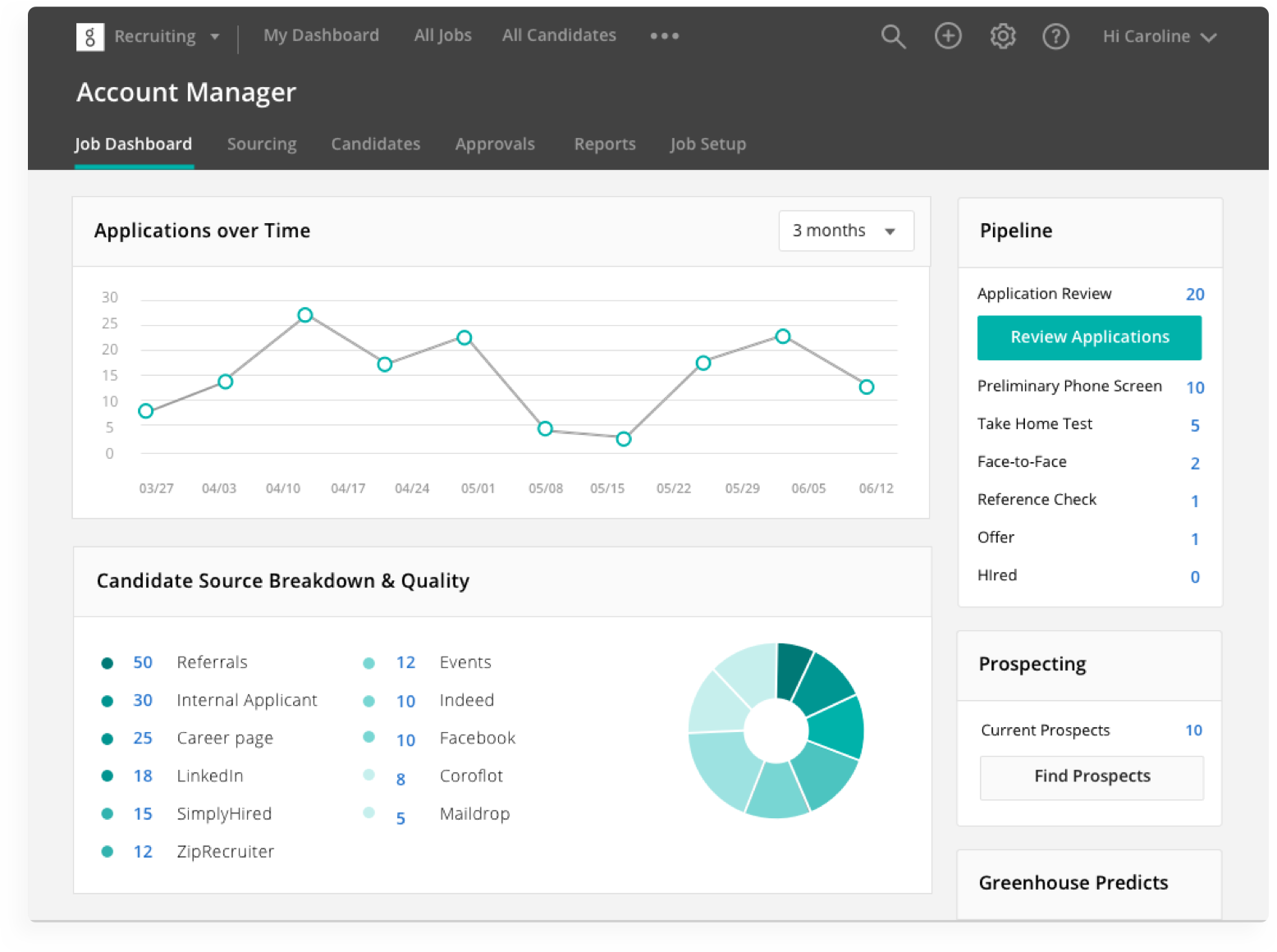

Greenhouse shows a breakdown of candidate sources and their quality (Source)
If you can see that you’ve hired the majority of your employees from a couple of sources, it’s sensible to allocate more recruiting budget to these sources. Additionally, you can use this data to improve your budget allocation by looking at return on investment in each sourcing technique.
3 steps to creating quality job descriptions and relevant sourcing
You can’t hire the right employees if they’re not in your pipeline. Relevant job descriptions and sourcing practices will help you attract the right candidates.
Make sure you reflect the critical attributes in your job description.
Keep the job description as to-the-point as possible, and liaise with relevant managers to determine what key details, such as salary, you can highlight in the job description.
A powerful ATS tool will help you fill your pipeline with top talent, and also help you identify the best quality sources of candidates.
Assess Candidates Against Your Desired Critical Attributes
So, you’ve mapped out your critical attributes, posted your job description and weeded out appropriate applicants, and now you’ve got a line of candidates waiting to be assessed and interviewed.
During the interview stages it’s easy to get distracted by individual personalities, but this is the place where you need to check just how well candidates match with your critical attributes. Eighty-five percent of job applicants lie on their resumes, so it’s crucial to check out this information through structured interviews and assessments.
Structured interviews are a way of standardizing the interview process for all candidates. Employers create a set of questions that focus on the critical attributes for the position, and candidates are asked the same questions in the same order. This benefits the employer by creating an assessment that is focused on the skills and attributes, and allows them to rank interviewees on the same scale.
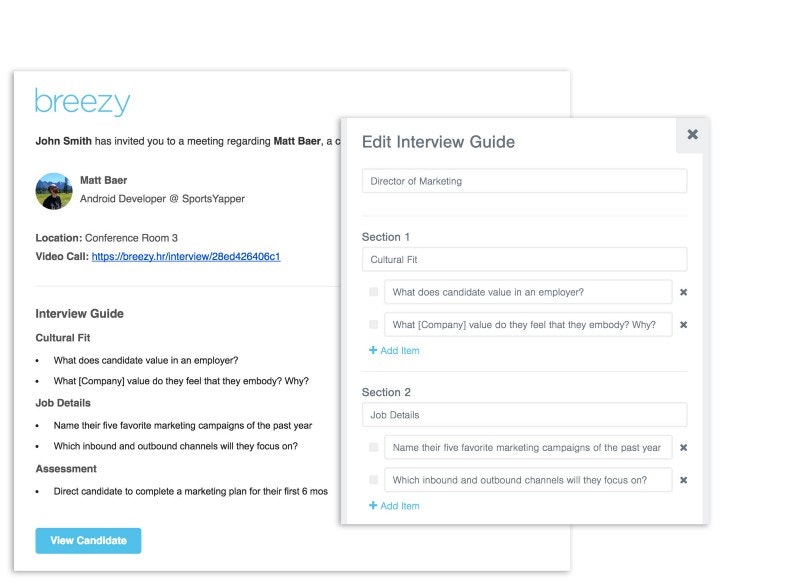

Structured interview template in BreezyHR recruiting platform (Source)
Testing candidates’ skills through talent assessments is also a great way of checking that applicants match your critical attributes before you hire them. For positions that require a high degree of specific skills, this step is especially important when hiring the right employees.
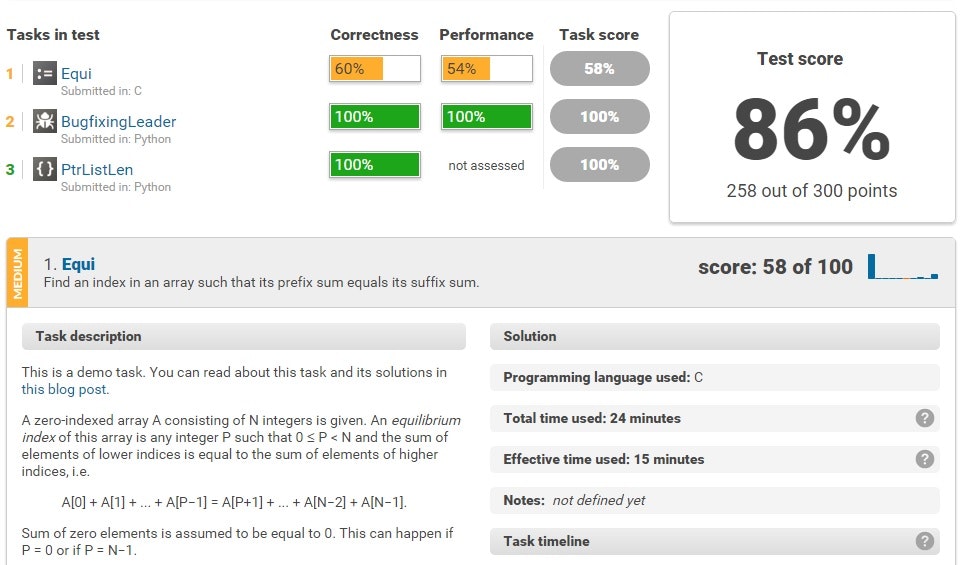
Codility provides a testing platform that helps recruiters test potential software engineers (Source)
Pre-employment assessments can take the form of portfolios, sample writing tests or presentations. For certain industries, the most effective approach is a skills test that will rank their skills according to your critical attributes.
3 steps to assessing candidates against your desired critical attributes
Create a list of standardized interview questions and evaluation questions that you’ll apply to each candidate.
Devise a ranking and scoring system that closely aligns with the job’s critical attributes.
If applicable, set interviewees pre-employment talent assessments in order to avoid hiring someone who is underskilled for the position.
Conclusion
While there’s no way to get hiring decisions right 100 percent of the time, you can make recruiting the right person easier by following the steps above. Hiring the right employees will save you time and money, and ultimately drive your business goals.
Want to make more informed hiring decisions? Our advisors can help and advise you on finding the right recruitment technology for your business or industry. Call our advisors at (855) 998-8505 for a free consultation to narrow down your options in less than 15 minutes.
Note: The information contained in this article has been obtained from sources believed to be reliable. The applications selected are examples to show a feature in context, and are not intended as endorsements or recommendations.